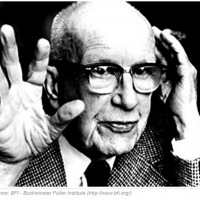Welcome! Here are the website rules, as well as some tips for using this forum.
Need to contact us? Visit https://heatinghelp.com/contact-us/.
Click here to Find a Contractor in your area.
If our community has helped you, please consider making a contribution to support this website. Thanks!
still unclear on appliance draft classification (test in 2 weeks)
Options
Diamonddave
Member Posts: 10
Need examples of: "Appliances having draft control devices"
AND
"Appliances not having draft control devices"
as the B149.2 code would consider them
AND
"Appliances not having draft control devices"
as the B149.2 code would consider them
0
Comments
-
7.18 Construction heaters and torches would not need a draft control
7.19 Direct fired door air heaters would not need a draft control
are just two examples of appliances that do not need a draft hood since the byproducts of combustion heat is the actual heating media.
A non vented space heater is another example, however those flames are significantly smaller than the equipment that a Red Seal license would deal with.
I'm sure there are some direct vented industrial boilers that may also fall in this category since they are not vented into a chimney that creates a draft or "pressure difference" as @Bob Harper would say.Edward Young Retired
After you make that expensive repair and you still have the same problem, What will you check next?
1 -
In my experience induced draft appliances don't have draft control devices. This is a blower that pulls exhaust out of the heat exchanger. A forced draft blower that charges the combustion chamber/ burners with air might have a draft control device depending on the fuel type, design and flue. The oil I've seen does. They protect the combustion tune from the changing draft forces of a cold and hot flue. A cold flue has low draft and a hot flue can have a high draft. So much that it pulls too much air in to combustion making it too lean. Maybe a natural draft "bonnet" is considered a draft control device.
Not sure if that relates to B149.21 -
thanks! that's what was throwing me off on a test question, appears (the CSA test) categorized a power-burner as a "draft controlled equipped appliance" when i assumed it wasn't (due to the mechanical fan pushing into combustion chamber)0
-
Any thermosyphon direct vent fireplace does not have means for draft control. On vertical applications, an orifice plate may need to be installed to restrict the flow so high velocity gases do not disturb the secondary air feeding a standing or intermittent pilot.
A barometric damper is the classic draft control
On very large boilers, there are complex systems that measure stack gases, draft, etc. and meter the intake air (O2 trim). However, as with most large boilers, they use dampers, which are flow controls- not pressure controls.
On CAT IV condensing gas appliances, the intake air may exceed the requirements, resulting in lower efficiency. In such cases, a metering valve may have to be installed immediately upstream of the appliance balanced using combustion analysis. However, again this is a flow control as the unit is exhausting via a power venter. In the sense a power venter can modulate with the firing rate with some units, yes, it could be considered a 'draft control' albeit positive vent pressure. Natural draft is a negative pressure differential With Respect To the Combustion Appliance Zone. Technically, the lighter density of stack gases are forced up the chimney by the denser, cooler CAZ air but the stack pressure remains negative.
Gimmicks like the Thermiser affect the stack velocity by creating a buffer tank, which slows the gases exiting the combustion chamber resulting in a longer residence time (time, temp., turbulence). Then, the orifice plate (vena contracta) causes the effluent velocity to rapidly increase resulting in a quick evacuation of the secondary chamber. The problem with orifice plates is eddies immediately downstream. This creates a higher static pressure, which can negate the positive effect of higher exit velocity. ASHRAE calls for an optimum natural draft velocity of about 0.8 meters per second.
Regarding changing flue diameter as a means of control, consider your blood vessels. When you get scared, epinephrine (Adrenalin) and norepinephrine cause the smooth muscle of the vessels to constrict. This results in a flow restriction to the affected area while the back pressure between the area of peripheral vasoconstriction and the heart sees a rise in blood pressure. This is due both to the backpressure and to an increase in heart rate, force and automaticity by the catecholamines. If your feet get cold, put out the cigarette and put on a hat. As the blood in your head warms, the catecholamines with be stopped allowing vasodilation. Your skin warms and gets red again while the peripheral perfusion pressure drops. We don't have vents and chimneys that can modulate like the smooth muscle of arteries, arterioles and capillaries. If we did, THAT could be considered both a 'draft' and 'flow' control.
2 -
at this point, i just need to navigate the appropriate code tables to answer test questions. though some fascinating examples made with real world mechanics & physics at work! think the code just sees them as draft hood equipped or fan/mechanical draft, however i see from the points made, there's all kinds of exceptions0
Categories
- All Categories
- 87.3K THE MAIN WALL
- 3.2K A-C, Heat Pumps & Refrigeration
- 61 Biomass
- 429 Carbon Monoxide Awareness
- 120 Chimneys & Flues
- 2.1K Domestic Hot Water
- 5.8K Gas Heating
- 114 Geothermal
- 166 Indoor-Air Quality
- 3.7K Oil Heating
- 77 Pipe Deterioration
- 1K Plumbing
- 6.5K Radiant Heating
- 395 Solar
- 15.7K Strictly Steam
- 3.4K Thermostats and Controls
- 56 Water Quality
- 51 Industry Classes
- 50 Job Opportunities
- 18 Recall Announcements


